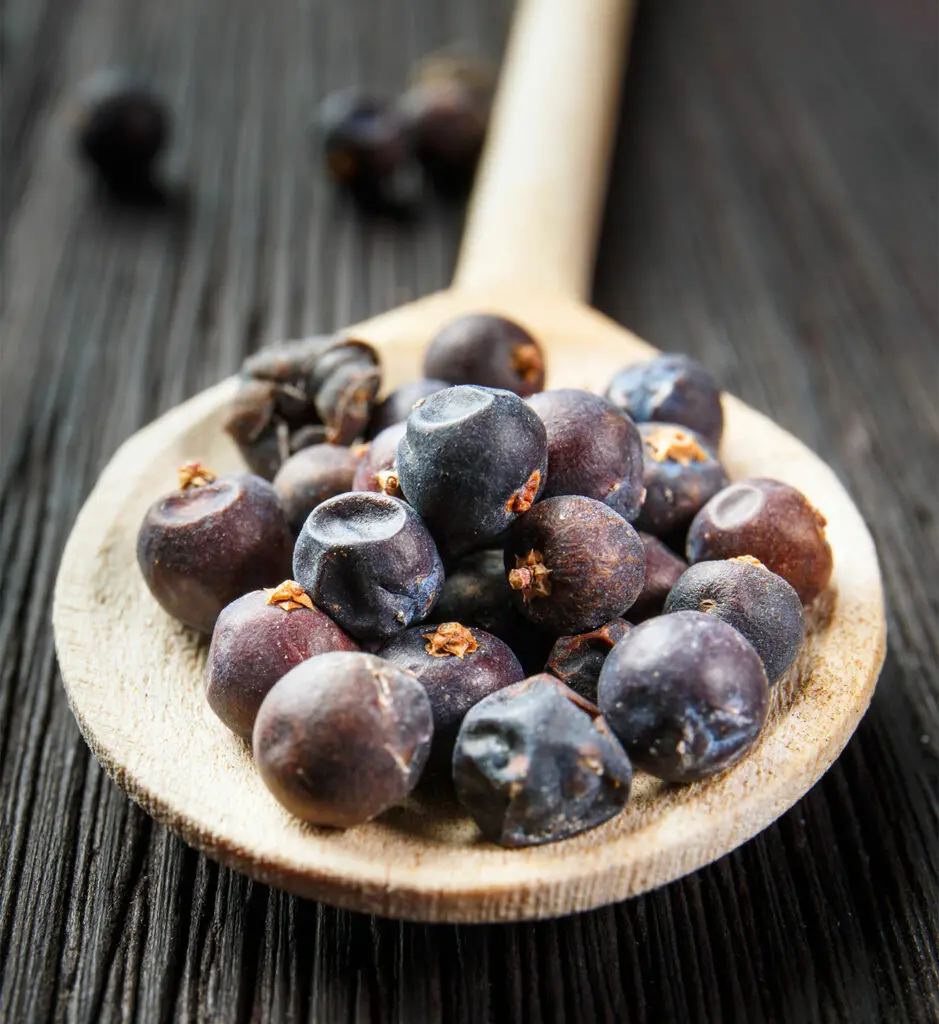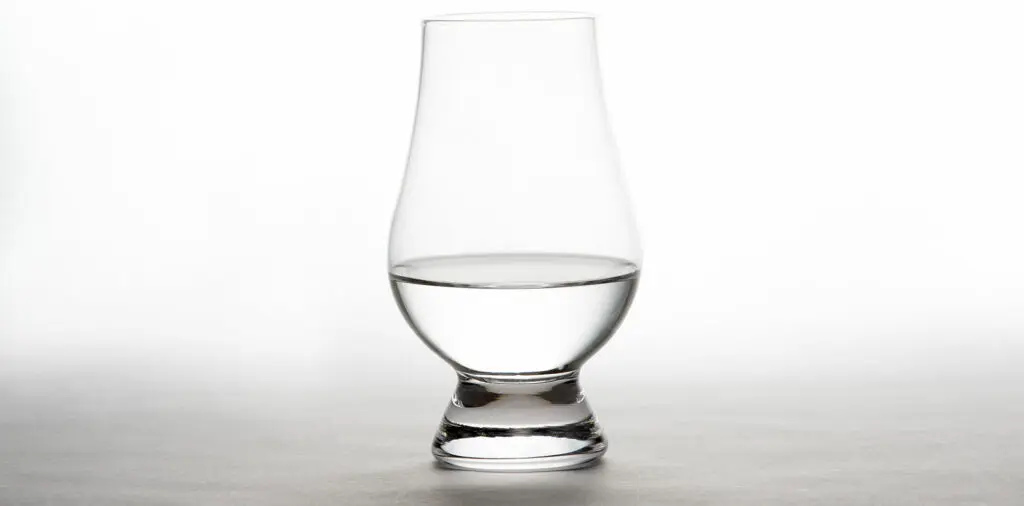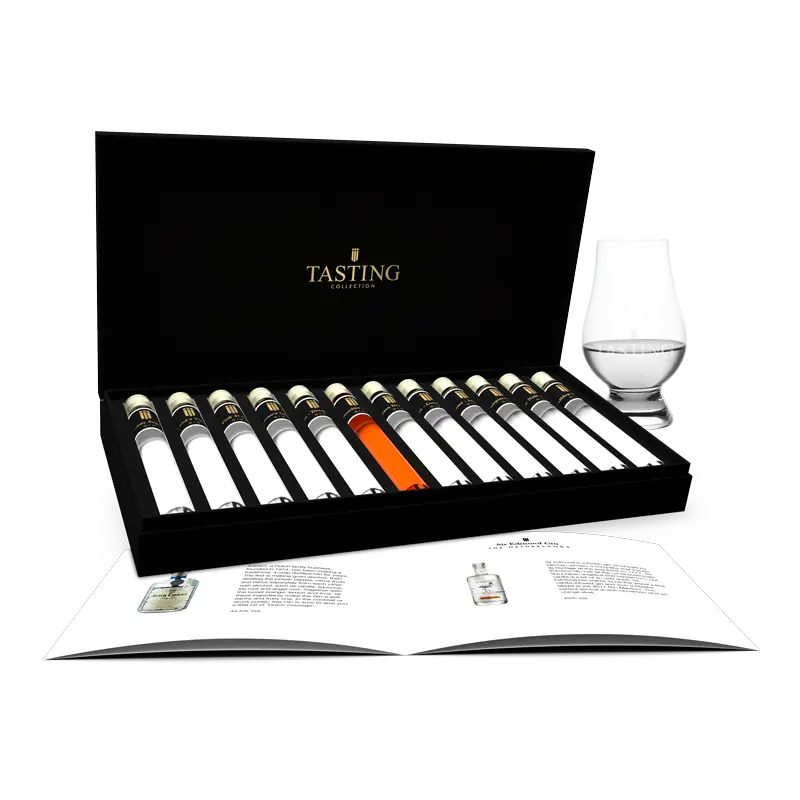
Gin
Gin is the ‘fashionable drink’ in summer. Learn all about Gin here, order a Gin Tasting Collection and become a true Gin connoisseur!
Gin is made from a distillate of a fermented grain mash to which juniper berries or blackthorn berries are added during the distillation process. The predominant flavor of juniper berries is determined by law. In addition, spices such as coriander seeds, angelica root, dried lemon, lime or orange peel and iris root are used as additives. The diversity of herbs and spices is increasing. The EU has set 37.5% as the minimum alcohol content; in the United States it is 40%. The more alcohol the drink contains, the stronger the taste becomes. Ordinary gin is rarely drunk pure because of its dry taste. Gin with blackthorn berries is less dry.
The history of Gin
In the 11th century, monks from Italy brewed wicked spirits, whose harshness of flavor was somewhat hidden by using juniper berries. In the centuries that followed, when the Black Death plagued Europe, this drink, which would later evolve into gin and gin, was used as medicine. It will not have had much healing effect on the disease, but the alcohol did have a somewhat narcotic effect.
In the Middle Ages, a drink very similar to genever was produced in the Netherlands. Professor Franciscus de Le Boë Sylvius made a spirit around 1650, and he called it genievre or genova. This means “juniper,” or juniper berry. This quickly became genever or gin in the vernacular. Gin is derived from gin. Distillates containing herbs such as anise, coriander and caraway were initially intended as medicine, but were soon consumed for pleasure.
In Great Britain, this was further developed into its own British product; the gin. The English army of William of Orange (then ruler of the Netherlands) came into contact with gin in the 17th century, in the midst of the 80-year war against the Spaniards, during which they could use a pick-me-up. The soothing and heart-strengthening glass before battle was given the pet name “Dutch Courage”; Dutch Heroism. The throne of England was conquered by William of Orange in 1688. He directed increased production of alcoholic beverages and from then on gin was allowed to be made without a license. The tax to import liquor went up tremendously and, as a result, a gigantic production of a very poor quality gin emerged; cheaply produced, made from inferior quality raw materials and with lots of juniper and sugar for better taste. Gin was affordable for every purse. People lost control completely, and by 1720 production equaled half a gallon of gin per Londoner; counting the young and elderly. By 1740, half of all drinking establishments in London consisted of “gin shops. Gin meant social and medical problems and unrest.
Around 1750, the English government got the abuse of gin under control through The Sale of Spirit Act 1750, also known as the Gin Act 1750. Only the large distilleries were licensed to distill alone. This improved the quality. Slowly the less sweet variety was developed, and with the invention of the new equipment-the Coffey Still (also called Continious or Patent Still ), drinks of better quality were produced. In this way, the dry (unsweetened) style gins we now know as London Dry Gin were created. The oversweet Old Tom gin with its strong juniper flavor lost out in this process. The excessive sweetness served to hide the harsh taste of grain distillate. Gin grew from a peasant beverage to a respectable middle-class beverage.
In the late 19th century, gin beat gin worldwide, mainly because Americans preferred gin to gin. Americans are the world’s first cocktail drinkers. Gin is easily mixable and, before vodka, was the most mixable bare spirit for cocktails. As the popularity of vodka increased in the 20th century, the use of gin declined. Starting in the 1980s, however, gin slowly regained popularity among cocktail drinkers. As of 2000, gin is once again wildly popular and the selection is greater than ever.
Where is Gin made?
Gin does not come from a particular geographical area. The first gins came from London; today, gin is produced all over the world. Spain, for example, is big into gin production, but gin is also produced in the United States, Scotland, Scandinavia and even the Netherlands.
Infusing gin
Infusing gin creates new flavors and textures. An infusion is the infusion of flavorings into liquids or solids. Perhaps the best known infusion is infusing tea leaves in hot water. So this is also possible with gin. During infusion, flavorings are added to the distillate. The variety of infusions is endless, any flavor desired can be added to liquid or solid. Herbs and spices are often added to an infusion to create a particular flavor. The flavor of a component changes when herbs and spices are added, especially when done with infusion. When the aroma molecules are exposed to other ingredients, air and heat, a series of chemical reactions begin. The original fragrance chemicals are converted into other substances, increasing the complexity of the infusion.

Different types of Gin
There are 4 types of gin:
London Dry Gin or Plymouth Dry Gin
Although the name suggests otherwise, this gin does not have to come from London. What matters is how this gin is made. It is produced in the original way, with 1 distillation, at the same time as the addition of all the ingredients. After this process, only water is added.
Distilled Gin
Distilled Gin goes through the same process as London Dry Gin or Plymouth dry Gin, but with Distilled Gin, additional ingredients are added at the end. We know this type as the original “premium gins,” where the gins are distilled again with, for example, orange or lime, or spices. There is also the possibility of infusion with, for example, rose petals or cucumber.
Compound Gin
With Compound Gin, the label only states that it is a gin. Commonly used as the house brand of a supermarket or liquor store. Flavors and or extracts are added to these gins without being co-distilled. This method of production is cheaper.
Old Tom Gin
This variety is produced a bit more these days because of the comeback of gin and cocktails with gin. Old Tom gin is much sweeter than classic gin, making it ideally suited for cocktails.
Ultra Premium Gin
Ultra Premium Gin is a purer gin than the 4 other types. Ultra Premium gin has been distilled multiple times, making it purer than other types of gin.

The difference between Gin and Genever
Simply, the similarity between gin and gin is the juniper. The difference is in the type of alcohol. Gin must be made with neutral alcohol, gin with grain alcohol. Neutral alcohol is distilled to 96%, similar to vodka. In addition, gin consists of malt wine, which has a strong grain taste, similar to whiskey that has not yet been aged.
This gives gin a trickier character and therefore makes it less suitable as a mixed drink. Jenever is usually drunk pure, either at room temperature or chilled. Gin is flavored with many spices during distillation, this is what makes the taste so specific, and therefore very suitable for mixing. So the difference between gin and gin is very clear, both in taste and in use.

